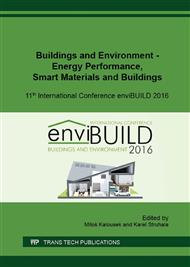p.527
p.537
p.547
p.556
p.564
p.577
p.585
p.593
p.601
Rule Based Building Construction Generation: An Approach Based on Formal Language Methods
Abstract:
The composition of efficient and appropriate building constructions is a key agenda in the building delivery process. While this process is regularly considered to be of highest importance for the final quality of a building, many involved stakeholders regard it as a cumbersome and repetitive routine. Therefore, approaches to facilitate this process should be investigated. Toward this end, we address the layer-wise building component composition via formal language methods. These are regularly used in computer science to formalize real-world processes into a language that can be processed by a computer. Regarding building component generation, relationships and interdependencies between different layers need to be considered. While these are easy to understand for a skilled human planner with pertinent domain knowledge, the exact formulation of building composition rules is far from trivial. Thus, automated building part generation requires collection and formalization of the required knowledge regarding building component composition, so that it can be readily transformed into a processual form. After collection, definition and structuring of such rules, the overall process of component generation can be expressed in Pseudo-Code. This offers three major advantages: i. Pseudo-code is vendor and platform neutral and is a widely used concept in computer science; ii. Potential mistakes and issues can be easily identified, iii. Flexibility, extensibility and editing ease is ensured. In this contribution we illustrate a general approach, define certain rules and thresholds, and introduce a formalized method for building part generation. Furthermore, we demonstrate the concept via a limited number of constructions and discuss potential application scenarios.
Info:
Periodical:
Pages:
564-573
Citation:
Online since:
December 2016
Authors:
Price:
Сopyright:
© 2017 Trans Tech Publications Ltd. All Rights Reserved
Share:
Citation:


